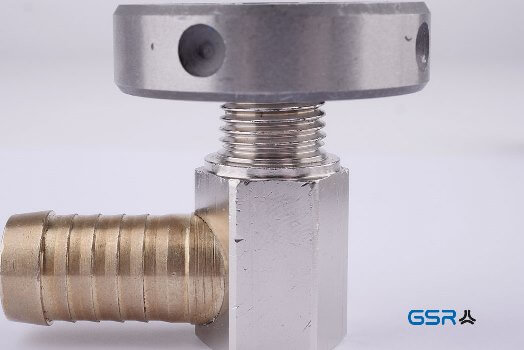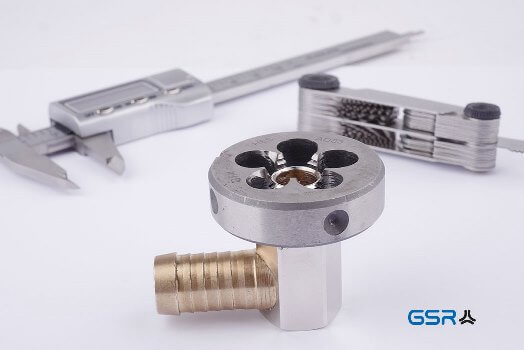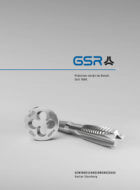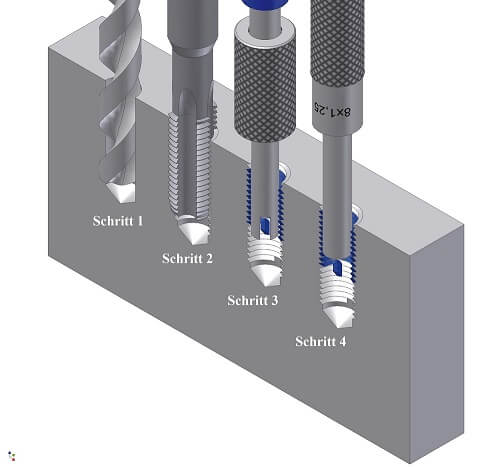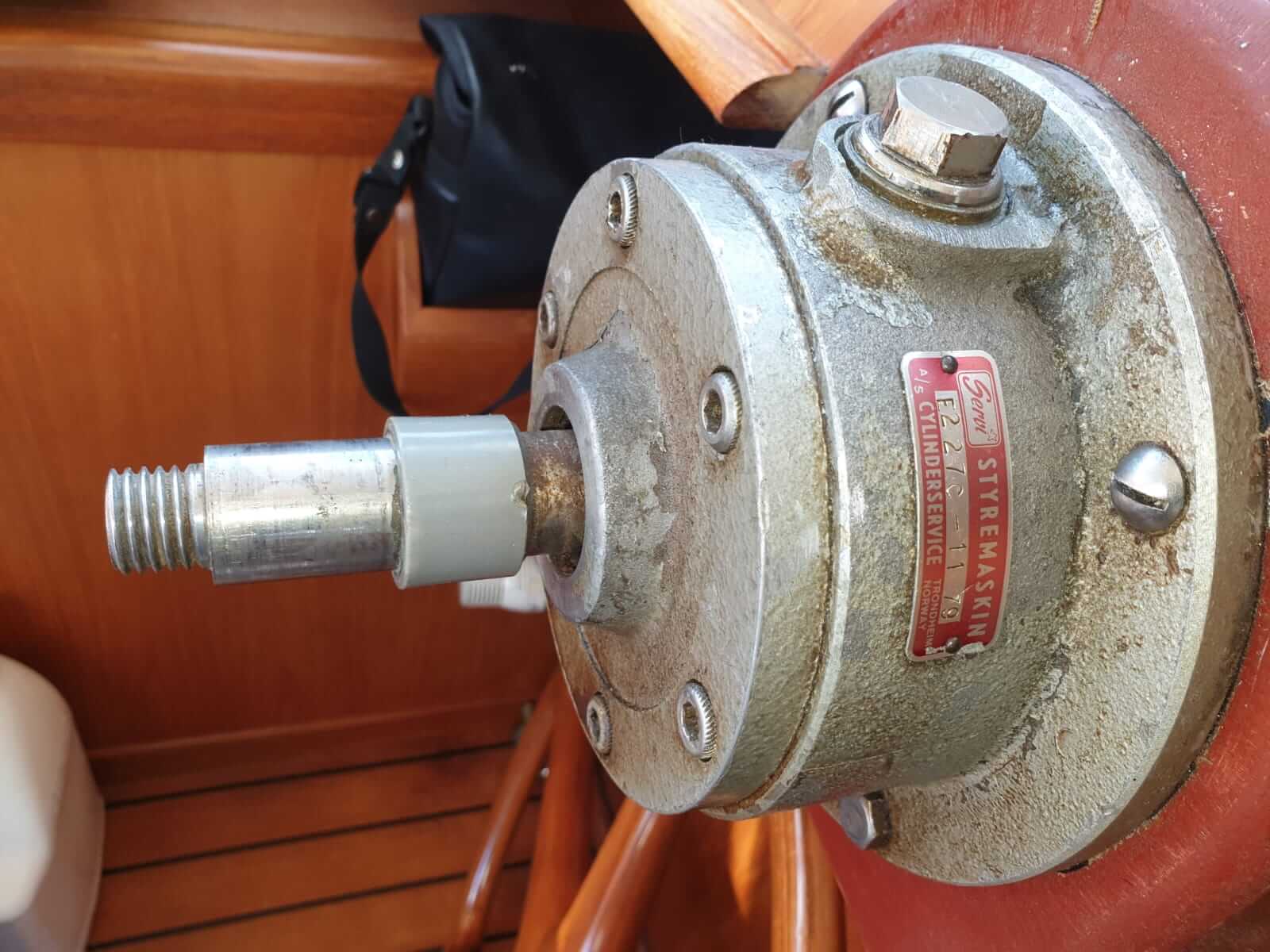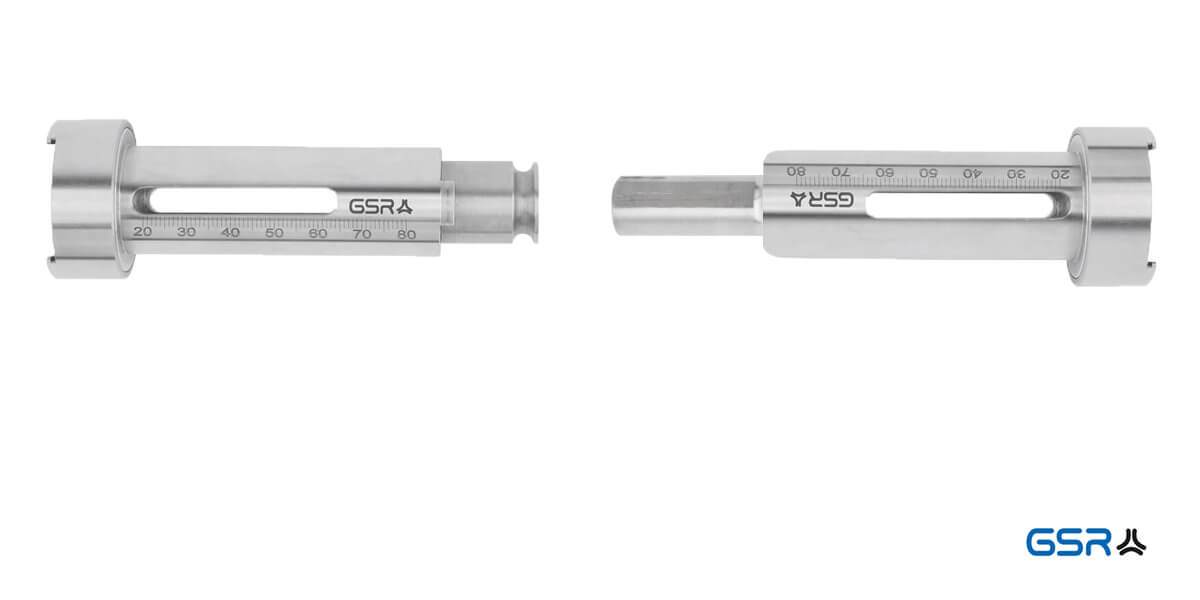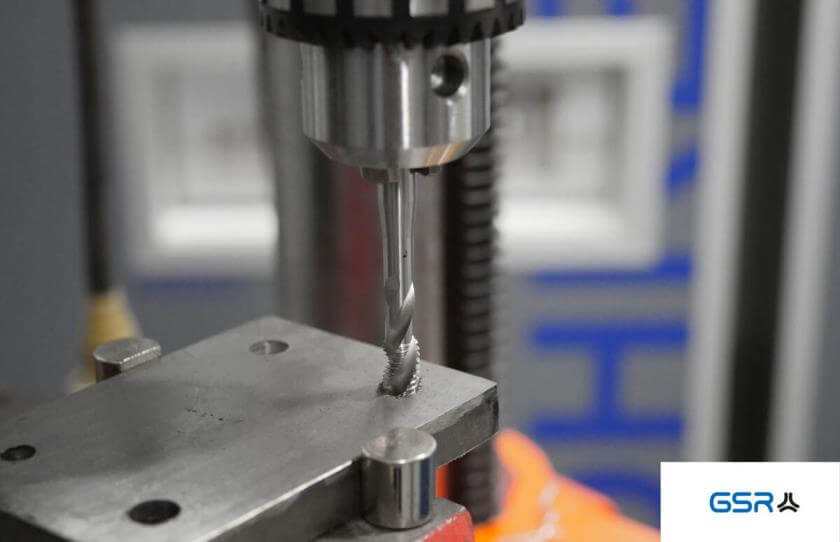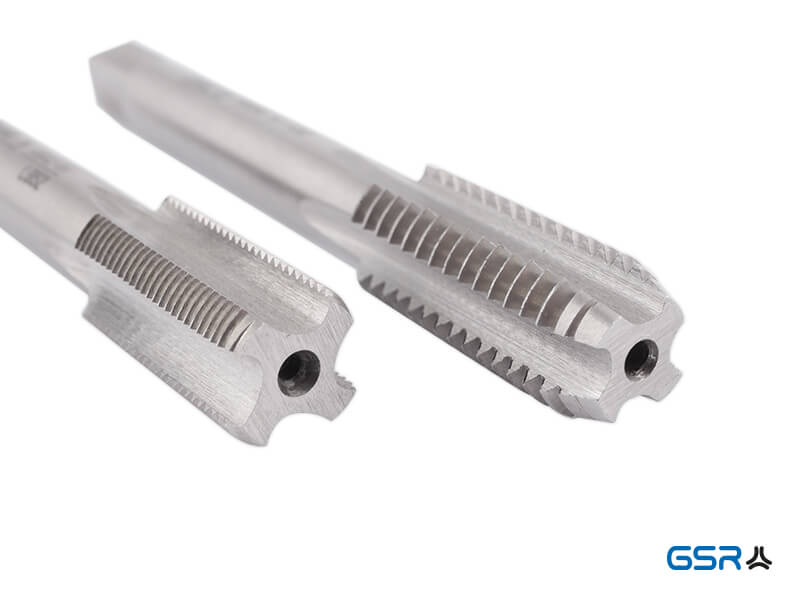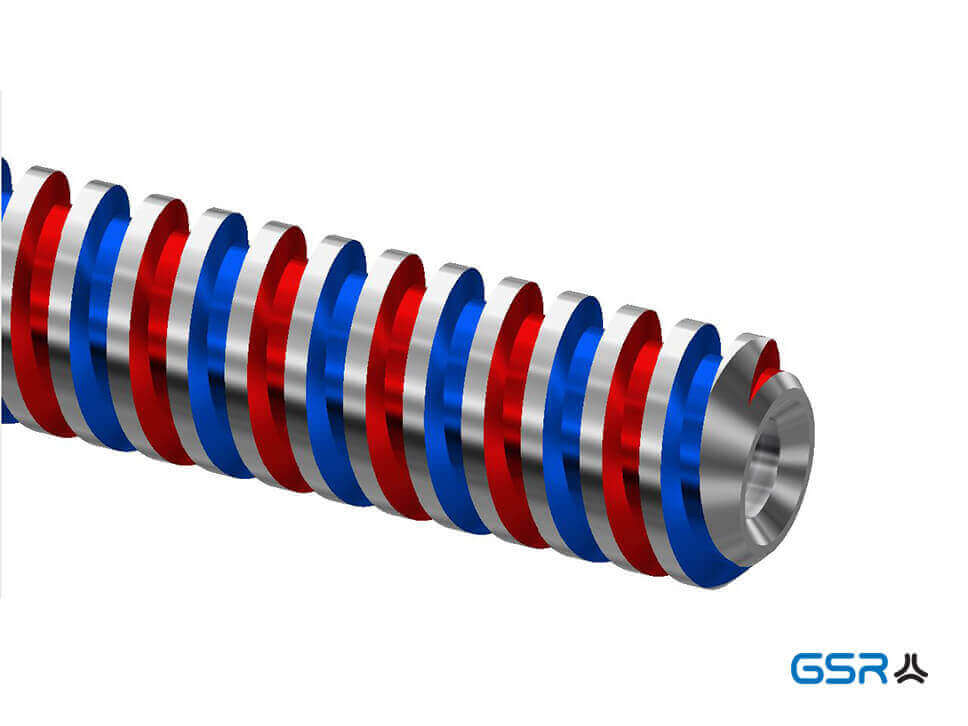#1 Practical example: 3 steps for thread determination (1/4″ inch)
Today we would like to show you in 3 steps how to determine a thread yourself. To do this, we will take a practical example from our everyday work: A customer asked us to determine the thread of an angle piece. We will explain our procedure step-by-step. At the end of these instructions for determining the thread, you too can determine your own thread.
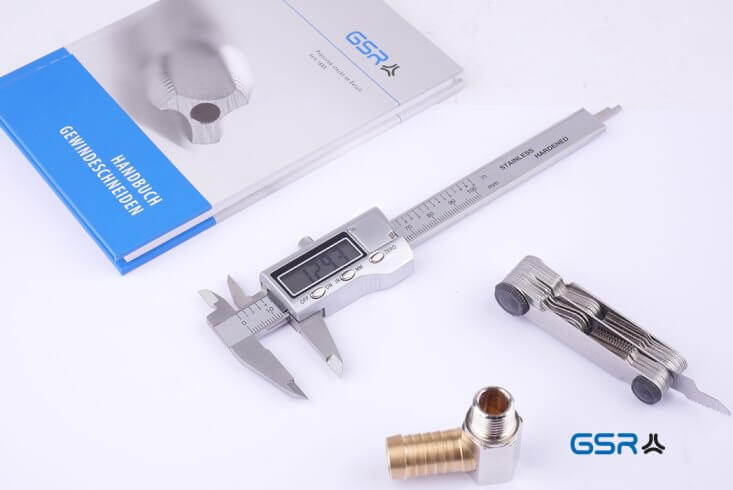
What do I need to determine the thread?
To determine the thread you need the diameter and the pitch. We determine the diameter with the help of a caliper gauge. We determine the pitch with the help of the thread template.
To determine the thread you need:
- workpiece
- caliper gauge (analog or digital) Available in the Shop
- One thread template (metric and imperial) Available in the Shop
- technical table (here: thread comparison table from our manual) For free Download
We offer specially designed thread determination sets in our shop.
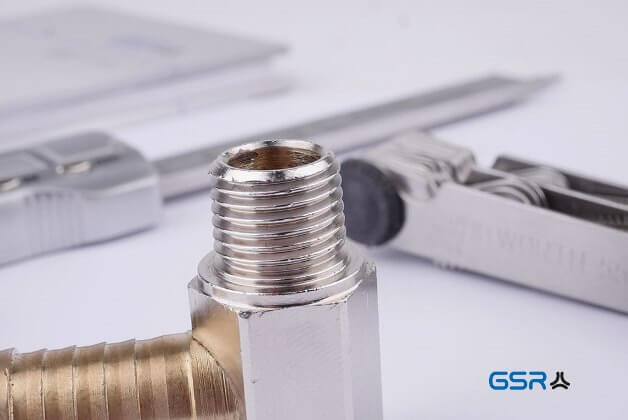
1. Step: Determine the diameter of the thread
You can determine the thread diameter with a digital or analog caliper gauge. In our practical example we use a digital caliper gauge. Position the caliper gauge as shown in the picture. Do not use the tips of the calliper but rather the wider part of the calliper tips. The digital calliper shows you the diameter on the display.
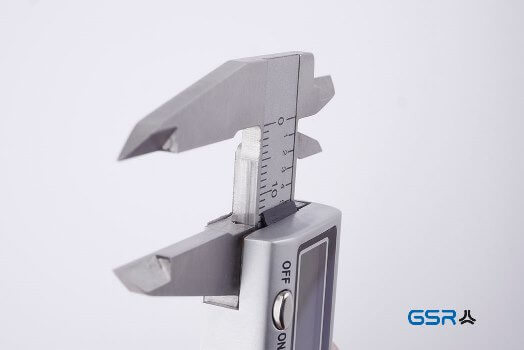
Based on our experience, we have measured the diameter at two points. At the upper as well as at the lower part of the elbow.
Why in two places?
The diameter should be the same on the complete thread. If this is not the case, it is a tapered thread. Tapered threads are mostly used for pipe threads. Here you will find a special article about pipe threads: An overview of the 4 best known types of pipe threads ( NPT | NPTF | BSP | BSPT ).
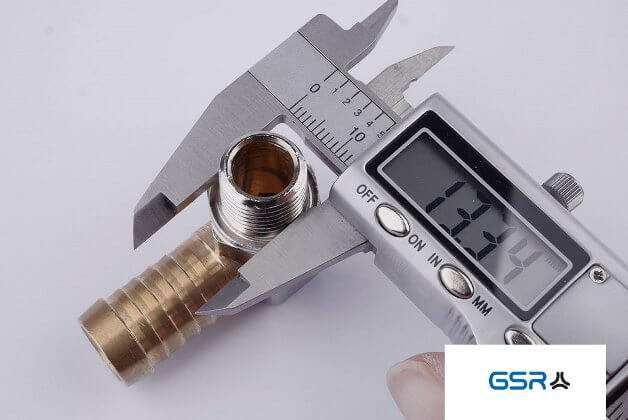
Measure once at the lower part of the elbow…
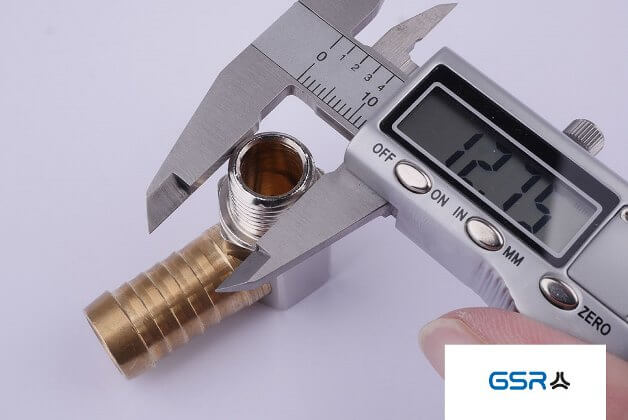
…and once at the upper end of the workpiece
In our example this is exactly the case. We note down both values. 12.75 mm and 13.34 mm. More on this later.
2. Step: Determine the pitch of the thread
We determine the pitch with the help of a thread template. There are templates for metric and imperial threads. In our example we use a combination template. Since pipe threads are always inch threads, we try only these until we have the right thread template.
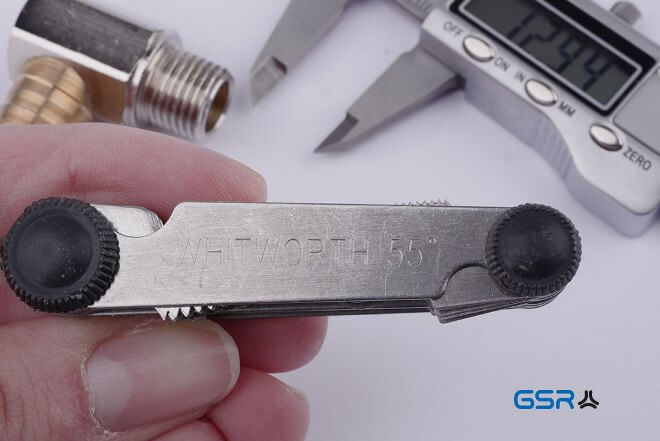

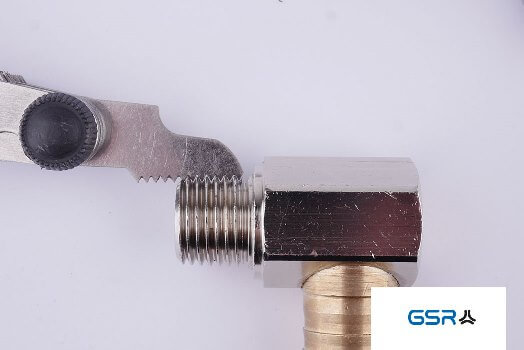
In this case, the thread template 19 G ( 19 threads per inch)
3. Step: Look up values in the thread comparison table
After we have collected all the values, we only have to look them up.
The diameter was: 12.75 mm and 13.34 mm
The gradient was: 19 G
In this case, the thread determination has shown BSPT (British Standard Pipe Taper)
- Nominal diameter BSPT (R) ¼”.
- 19 gear/inch
- Thread diameter 13.157 mm
- Nominal diameter pipe 8 mm
- Core hole diameter 11.445 mm
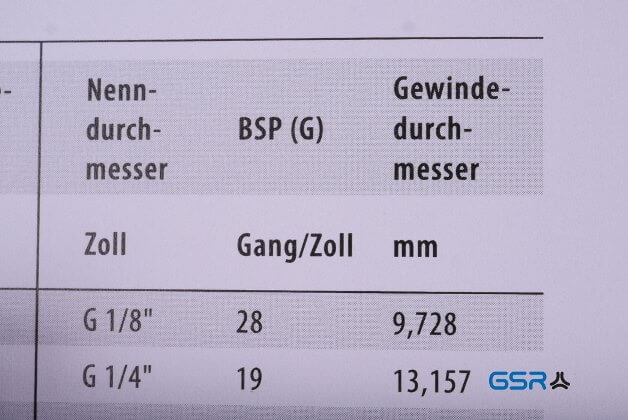
Thread comparison table: BSP (G) 1/4″ has the same thread diameter as BSPT (R) 1/4
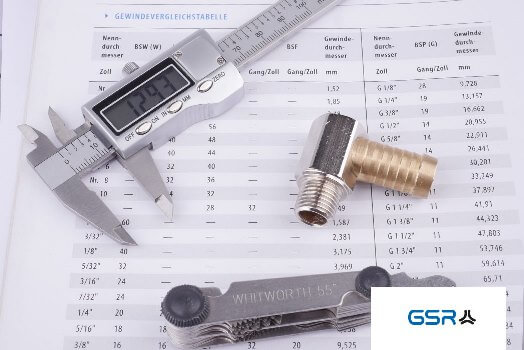
We then took a suitable die from our stock to check our thread determination. Voilá! Sits, fits, wobbles and has air.

Additional info on BSPT Whitworth pipe thread for threaded pipes and fittings
BSPT is also indicated with R (for the tapered or conical external thread). However, the counterpart for the internal thread would be cylindrical and is abbreviated Rp. The thread connection is self-sealing due to the combination of tapered external thread (R) and cylindrical internal thread (Rp).
We hope you enjoyed our 3-step thread determination. Do you have any questions, suggestions or feedback?
